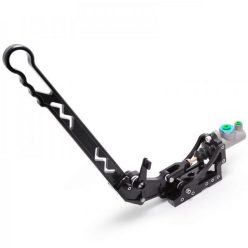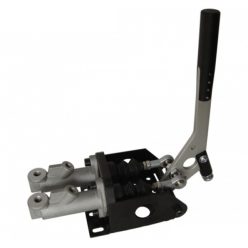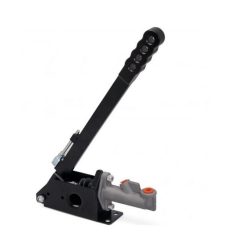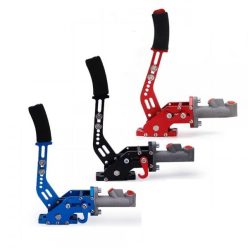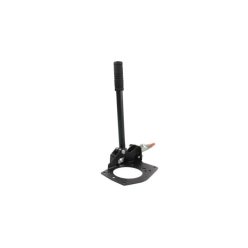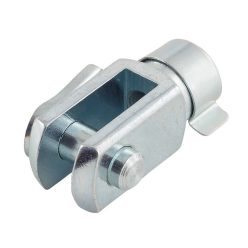Hydraulic handbrakes give far greater rear brake control than cable systems, making them ideal for drift, rally and track applications. By acting directly on the rear hydraulic circuit, a hydraulic e-brake can lock or finely modulate the rear wheels with minimal effort. The range includes universal and car-specific units with different bore sizes (0.625" / 0.7" / 0.75"), short, long and extra-long levers, vertical or horizontal mounting options and lockable mechanisms from brands such as Epman, SWAGIER, RS Ultimate, Turboworks, CNC71, OBP and others.
Net price: 106 €
Net price: 85 €
Net price: 37 €
Net price: 33 €
Net price: 94 €
Net price: 134 €
Net price: 7 €
Overview & Applications
Hydraulic handbrakes tap into the rear brake circuit to generate much higher and more controllable braking force than a stock cable handbrake. In drifting, rally and stage use they allow you to initiate slides, tighten lines or rotate the car into hairpins while leaving the foot brake to handle overall deceleration. Our selection covers universal tunnel-mounted units, hidden OE-location kits and various lever geometries so you can tailor ergonomics and braking response to your car and driving style.
Most assemblies are supplied as complete kits with a lever, master cylinder and in many cases an integrated reservoir. Levers are typically CNC-machined aluminium mounted on strong steel brackets, with handle lengths ranging from compact designs to long 435 mm and extra-long 630 mm versions for lighter effort and finer modulation. For example, long-handle Epman units are specifically tuned for drifting, where precise rear brake control is essential over long transitions, while reversible, lockable TK-11001 style e-brakes can be configured vertically or horizontally and used on either side of the tunnel.
Technical Basics
The core specification of any hydraulic handbrake is the master cylinder bore. Common sizes are 0.625", 0.7" and 0.75": smaller bores generate higher line pressure for a given force but require more lever travel, while larger bores shorten travel at the expense of heavier effort. Universal CNC e-brakes are often offered with all three options, letting you match the bore to rear caliper piston area and desired lever feel. Many cylinders use 7/16-20 (AN-4) inlet and 3/8-24 UNF (AN-3) outlet threads, making them easy to integrate with braided motorsport brake lines.
Construction is usually a combination of a CNC-machined aluminium lever for low weight and a steel base for stiffness, ensuring precise actuation even under repeated high loads. Advanced designs offer adjustable lever length, reversible mounting, lockable ratchet mechanisms and multiple colour options, while integrated-reservoir variants simplify plumbing in tight engine bays or where the OE reservoir is not easily accessible. Dedicated hydraulic handbrake master cylinders and brackets are also available if you need to match a specific Wilwood-type or Epman cylinder to an existing lever or pedal box.
Selection Criteria
When choosing a hydraulic handbrake, first decide how you will integrate it into the braking system: plumbed in series with the existing rear circuit, or as a separate circuit with its own rear calipers and balance bar. Series layouts are simpler and can work on dual-use street/track cars, but require careful consideration of master cylinder sizing so pedal feel is not compromised. Dedicated rear circuits, common on high-end drift cars, give more freedom in choosing calipers and master cylinder bore size without affecting the foot brake.
Ergonomics matter just as much as hydraulics. Longer levers reduce the force needed to lock the rear wheels and are popular in drift applications, whereas shorter levers provide a more compact, direct feel. Consider whether you prefer a vertical, slightly angled or horizontal lever position and whether you need a lockable ratchet for occasional parking-brake use. If your build keeps the OEM cable handbrake for road legality, a non-locking motorsport lever may be sufficient; if the hydraulic handbrake will be the only parking brake, a positively locking mechanism is essential.
Installation & Maintenance
Installing a hydraulic handbrake involves significant modifications to the brake system, so it is strongly recommended to use a professional workshop or experienced race builder. The mechanical assembly must be mounted to a rigid part of the chassis or a reinforced bracket so the lever cannot flex or loosen over time. Hydraulic plumbing should use new, high-quality brake lines and fittings rated for the expected pressures, with careful routing to avoid heat sources, moving parts and sharp edges. Once the system is plumbed, it must be thoroughly bled and tested in a safe environment before any high-speed driving.
Regular maintenance includes checking for leaks around all fittings, monitoring fluid level and condition in both the main and auxiliary reservoirs, and inspecting the lever pivot and master cylinder pushrod for play. Hard track and drift use accelerates wear, so periodic checks after events are wise. Brake fluid should be replaced at sensible intervals to maintain boiling point and prevent internal corrosion; small-volume handbrake circuits can suffer from heat more quickly than main circuits. Any spongy feel, inconsistent engagement or visible damping around seals is a sign that seals or the cylinder need service before further competition use.
FAQ
What is the advantage of a hydraulic handbrake over the stock cable handbrake?
A hydraulic handbrake acts directly on the rear hydraulic circuit, allowing far higher and more controllable braking force. This makes it much easier to initiate and control slides or tight turns in drift and rally applications compared with a simple cable-operated parking brake.
Which master cylinder bore size should I choose for my hydraulic handbrake?
Most builds work well with bores between 0.625" and 0.75". Smaller bores give longer travel and higher pressure for a lighter pull, while larger bores shorten lever movement but require more effort. The ideal size depends on your rear calipers, pad friction and preferred lever feel.
Can I still use my OEM foot brake with a hydraulic handbrake installed?
Yes. In a series layout the foot brake remains fully functional, with the hydraulic handbrake effectively adding a second control on the rear circuit. In separate-circuit race setups, the hydraulic handbrake usually works on dedicated rear calipers while the foot brake operates the main calipers.
Do I need a lockable mechanism for road use?
If the hydraulic handbrake will serve as your only parking brake, a lockable ratchet mechanism is essential for safety and legality in many regions. If you retain the original cable handbrake for parking, a non-locking motorsport lever is generally sufficient and slightly lighter.
What signs indicate my hydraulic handbrake needs servicing?
A spongy lever feel, inconsistent engagement, visible fluid leaks around the master cylinder or fittings, or unusual play in the lever pivot all suggest wear or damage. In these cases the system should be inspected, bled and, if necessary, rebuilt or reconfigured before further hard use.






